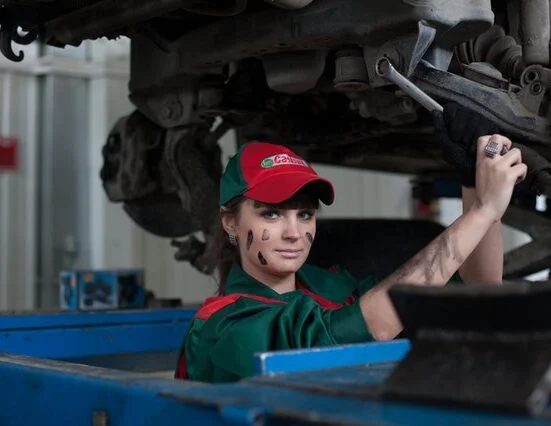Your refrigerator is one of the most energy-intensive appliances in your home. In fact, it accounts for about 15% of your home’s total energy usage. That’s a lot of energy, and it comes at a cost to the environment. The production of that much electricity emits harmful greenhouse gases into the atmosphere, contributing to climate change.
The demand for cold, generated by our appliances and cooling devices, increases as the world warms. However, the existing system is ineffective: many appliances (fridges, fans, and air conditioners) use power derived from fossil fuels such as coal and oil. And this aggravates the situation.
That is why, all across the world, experts are working to develop new technologies that are both environmentally friendly and efficient. One such concept comes from a garage in the heart of the United Kingdom, which employs liquid nitrogen to cool food trucks. One of the country’s largest supermarket chains, Sainsbury’s, has already begun testing it.
Cooling is a market that already generates close to US$82,000 million globally across refrigerators, air conditioners, and other devices. Clean cooling solutions are expected to earn close to $140 million per year in the next few years, according to experts.
Professor Martin Freer of the University of Birmingham, who wrote a report on the economics of cooling, said, “The enormity of the worldwide task to attain these kinds of technologies is huge.”
By the middle of the century, it will be the most severe energy crisis the world has ever faced. We’ll have to achieve it without relying on a lot of coal or oil.
One stone can kill two birds.
It’s questionable if the cooling will be the “number one” energy concern, but it’s apparent that it’s a real issue that requires immediate attention. As a result, liquid nitrogen cooling is becoming increasingly popular.
The concept is as follows: the truck cools the compartment where the food is transported with liquid nitrogen waste (at a temperature of -200C), usually chilled by a diesel-powered motor.
The nitrogen cools the back of the vehicle and powers a new engine that converts the energy it generates into gas. That energy is used for secondary cooling in this new engine. This technique was created by Peter Dearman, an amateur inventor who received funding from the Institute of Mechanical Engineers.
Dearman claims that existing liquid nitrogen waste can be utilized in the primary engine, but this raises the question of how much more the idea would cost if the new stock had to be created.
There is good news, though. Newer models of refrigerators are much more efficient than older models, so by upgrading to a newer model, you can help to reduce your impact on the environment. In addition, making sure that your fridge is adequately insulated and not overstocked will also help to reduce energy consumption. By taking these simple steps, you can help make a difference in the environment.
One of the ways that India is working to meet its growing energy demand is by increasing its use of energy-efficient appliances, such as refrigerators. By 2025, it is estimated that there will be more than 350 million refrigerators in use in India, and these refrigerators are expected to save more than 55 million tonnes of CO2 emissions each year. In addition to helping to meet India’s energy needs, refrigerators also have several other benefits, such as reducing food waste and preserving food safety.
In India, devices are rated for energy efficiency using the Indian Energy Efficiency Rating Program (IEEERP). Appliances that are IEEERP-rated are assigned a star rating from 1 to 5, with five being the most energy-efficient. To measure the energy efficiency of a device, look for the IEEERP logo and star rating on the product label. The higher the star rating, the more energy-efficient the device is.
When comparing products, be sure to compare products with the same or similar star ratings. You can also use the IEEERP website to check the energy efficiency of specific models of devices. Simply enter the model number into the search bar on the website and click “search.” The website will then provide you with a list of IEEERP-rated devices and their respective star ratings. By checking the energy efficiency of devices before you purchase them, you can help to save money on your energy bills and reduce your carbon footprint.
A 5-star refrigerator is an excellent investment for your home. You get the best in energy efficiency, but you also get a top-quality appliance that will last for years. In addition, a 5-star refrigerator comes with some features that are designed to make your life easier. For instance, many models come with ice and water dispensers, which can be a huge time saver when entertaining guests.
You’ll also find that most 5-star refrigerators come with an impressive array of storage options, so you can easily organize your food. And if you frequently entertain large groups, you’ll appreciate the additional space that a 5-star refrigerator provides. So if you’re looking for an appliance that will save you money and make your life easier, look no further than a 5-star refrigerator. There’s another, more important reason to invest in the best 5 star rated refrigerator: keeping the environment safe!
The 5-star refrigerator will help protect the environment and is the way of the future. 5-star refrigerators have been designed to be more energy-efficient than older models. They use less electricity to operate and often have freezer compartments placed on the side or bottom of the fridge rather than at the top. This design helps to prevent heat from escaping and keeps the fridge cooler, which uses less energy. In addition, 5-star refrigerators often come with features that help reduce food waste, such as door alarms that remind you to close the door or automatic defrost cycles that prevent ice buildup. By investing in a 5-star fridge, you can help to protect the environment and save money on your electricity bill. In addition, you’ll be doing your part to embrace the future of green technology.






